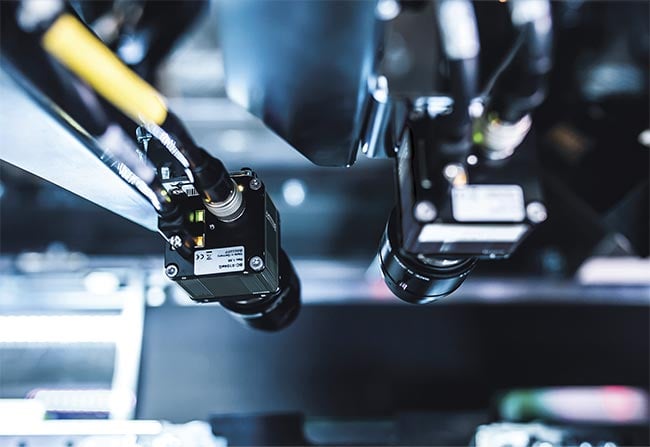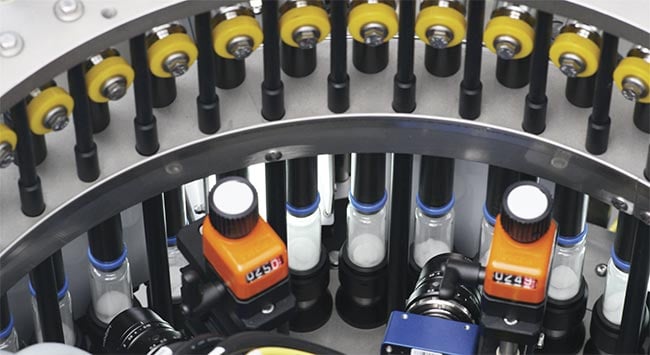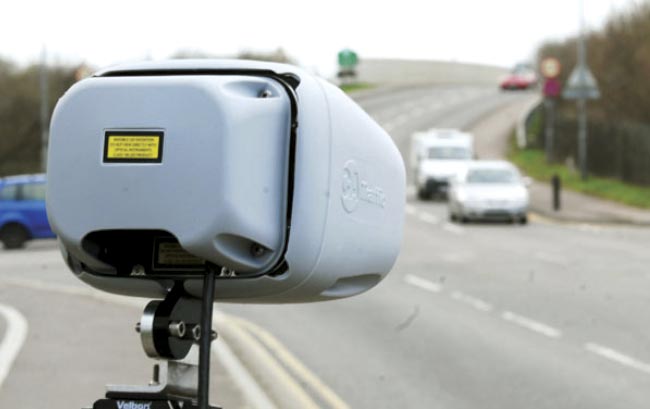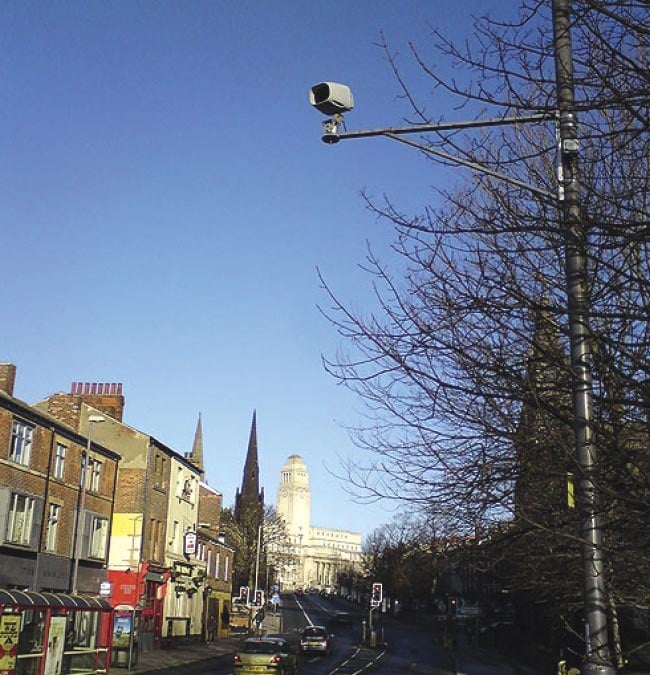Smart cameras are ideal for unique inspection projects in manufacturing, whereas industrial cameras are best suited for regular industrial image processing tasks.
FRANTISEK JAKUBEC, BALLUFF INC., AND ULLI LANSCHE, BALLUFF MV GMBH
In modern industry and automation, industrial image processing has become a well-established technology. Its reliability and functionality no longer need to be proved to companies. While lighting, optics, and resolution for specific applications still require careful consideration, the core functionality of machine vision has been proved and confirmed over several decades. With advancements in artificial intelligence (AI) and its subset of machine learning, the boundaries of what is possible are continually expanding. The several approaches to machine vision differ significantly in terms of capability and price range. To understand how these different approaches came to be, it is necessary to consider the early days of machine vision.

Balluff industrial cameras in manufacturing applications. Courtesy of Balluff Inc.
The evolution of machine vision
Research in machine vision dates to the 1960s, but it was not until the advent of digital cameras and personal computers (PCs) in the mid-to-late 1980s and early 1990s that machine vision began to gain traction. Initially, digital cameras produced analog video signals, which were converted into a digital format readable by PCs using frame grabbers. This process was complex due to varying video signal standards (NTSC, PAL, SECAM) and the multitude of PC expansion card interfaces, such as Industry Standard Architecture (ISA) and Peripheral Component Interconnect (PCI). The 1990s saw rapid developments in PCs, with new technologies quickly replacing the old, which was at odds with the manufacturing industry’s need for reliable, long-lasting products.
To address this, smart cameras were developed in the late 1990s using long-term available components. These smart cameras integrated a PC, camera, programmable image processing, and appropriate interfaces into a compact housing, focusing on essential components to achieve maximum performance with minimal power consumption. This compact design allowed for flexible integration into existing machinery, mounting on robots, and use in challenging environments. This marked the birth of the first successful product category in machine vision.
By the early 2000s, the PC market had stabilized, and consumer interfaces, such as FireWire, Ethernet, and USB, had emerged, with Ethernet and USB ultimately becoming the standards. This allowed for digital PC interfaces with sufficient data transfer bandwidth, leading to the second product category: the digital industrial camera. These cameras transmitted image data digitally to PCs, eliminating the need for frame grabbers, significantly reducing costs, and leveraging the consumer market for further cost savings. The increased professionalism of the industry through standards such as GenICam, GigE Vision, and USB3 Vision in the mid-2000s also contributed to the acceptance and growth of machine vision.
Smart cameras
There are two types of smart cameras: open and closed systems.
• Open Smart Cameras: These systems are powerful but complex, typically based on the Linux operating system, and require setup and configuration. Image processing libraries must be programmed, necessitating both programming and image processing knowledge. Occasionally, Windows-based systems are encountered, but these pose security risks after Microsoft support ends.
• Closed Smart Cameras: These can be divided into identification sensors and vision sensors.
• Identification sensors are designed for specific tasks, such as barcode reading. They are simple to operate with minimal parameterization. However, they lack flexibility and require different sensors for different tasks.
• Vision sensors offer greater flexibility for multiple tasks but require the user to have image processing knowledge to use various algorithms and parameters effectively.
Smart cameras are ideal for unique inspection projects in manufacturing, in which each production line may require different types of analysis, quality assessment, and defect detection. Limited resolution options and various lighting, optics, and image sensor choices can be challenging when using them. If speed is not critical, smart cameras are the preferred choice.
The future of smart cameras involves deep learning and cloud computing. Deep learning trains on thousands of good and bad images to automatically determine quality, but the computational and storage demands are beyond smart cameras’ capabilities. Neuronal networks calculated by supercomputers are transferred to smart cameras, but these networks’ internal workings are opaque, posing potential issues. The enormous storage required for deep learning often necessitates cloud computing, which raises questions about data security and access.
Industrial cameras
Industrial cameras are suitable for regular and diverse industrial image processing tasks. For single projects, smart cameras may be preferable for minimizing complications. Otherwise, expertise in industrial image processing is crucial. Industrial cameras require not only software configuration but also careful selection and programming, which can be challenging due to the variety of software options available.
Many OEM and serial machine manufacturers rely on industrial cameras, but their teams often include specialists in optics and lighting. A significant advantage of industrial cameras is the ability to connect multiple cameras to a single PC, reducing costs by optimizing hardware. In contrast, buying a smart camera essentially includes an integrated PC, making industrial camera solutions more cost-effective for systems with multiple inspection points or high annual production volumes.

Cameras are an important part of many pharmaceutical inspection applications. Courtesy of Bonfiglioli Engineering.


Smart cameras are used to monitor traffic. Embedded vision can also be used for this application. Courtesy of CA Traffic Ltd.
Industrial cameras offer a wide range of options, including cost-effective high-resolution rolling shutter cameras and various global shutter cameras. They are not limited to the visible spectrum; sensitive sensors for polarized light, ultraviolet, infrared, or combined wavelengths (such as SWIR sensors) address specific needs. Industrial cameras also provide flexible connectivity options, from USB to GigE and 10 GigE.
Regarding deep learning, industrial cameras benefit from the attached PC’s storage capacity, potentially eliminating the need for cloud storage and ensuring data control.
Best of both worlds
Developments in the smartphone market have driven performance and innovation in small, ARM (advanced RISC (reduced instruction set computer) machine)-based computing units on single-board mainboards. These can serve as evaluation units for industrial camera solutions or as platforms for smart cameras, easily integrating into larger systems — hence the name embedded vision. In the Internet of Things (IoT), embedded vision supports edge computing, decentralizing data processing by performing initial data preprocessing at the network’s edge and processing further in cloud servers. Higher resolutions and frame rates are achievable with embedded vision, with PCIe (peripheral component interconnect express) providing a standardized, scalable interface for near-latency-free image data transfer. MIPI (mobile industry processor interface) offers an even more cost-effective alternative for lower-resolution applications.
Despite their availability and popularity, single-board mainboards lack a standardized protocol equivalent to GigE Vision and USB3 Vision. The European Machine Vision Association (EMVA) initiated a standardization effort in late 2019, but a standard is not yet available.
Choosing between smart cameras, industrial cameras, and embedded vision is critical for the success of image processing projects. Each category offers distinct advantages: industrial cameras and embedded vision provide greater programmability and flexibility for complex tasks, whereas smart cameras are practical for simpler challenges. Understanding these differences allows for informed decisions and optimal outcomes in visual inspection applications.
About the authors
Frank Jakubec is a seasoned automation and technology specialist at Balluff Americas. With more than 14 years of experience in business-to-business product and solution sales, Jakubec
is an expert in machine vision and has a talent for business development. He earned both his bachelor’s in electronics and communication technologies and master’s in business and commercial engineering at industry from Czech Technical University; email: [email protected].
Ulli Lansche is a seasoned technical editor with more than 20 years of experience in the field of machine vision. He is responsible for creating and managing manuals in the vision department at Balluff, ensuring clarity and precision in technical documentation. Lansche holds a degree in computer science and has spent more than six years as a lecturer in multimedia technology at Heilbronn University; email: [email protected].